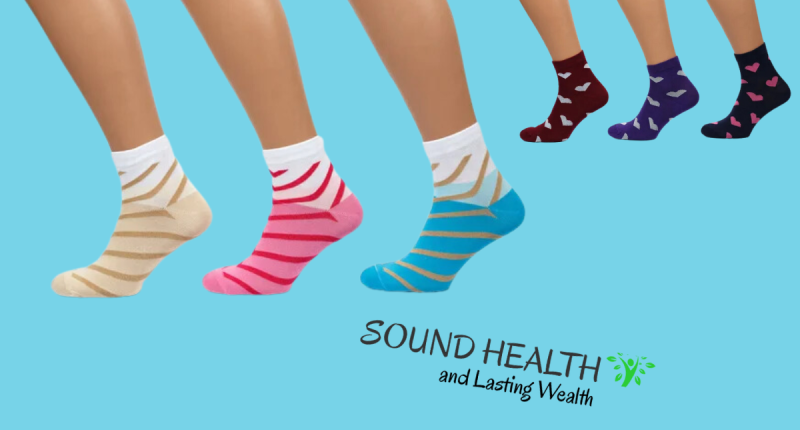Sharing socks with others, whether out of necessity or simply for convenience, can pose potential side effects or health risks. While it might seem harmless, sock swapping can lead to the spread of fungal infections, skin irritations, and even foot odor. Here’s a closer look at the potential side effects of sharing socks:
Fungal Infections
Socks provide a warm, moist environment that’s ideal for the growth of fungi, particularly athlete’s foot fungus. This contagious fungus thrives in the tight-fitting, sweaty environment of socks, and sharing these socks can easily transfer the fungus from one person to another. Symptoms of athlete’s foot include blisters, intense itching, redness, cracking, and scaling of the skin between the toes. Jock itch, ringworm, tinea pedis, and tinea corporis are other fungal infections you can contract from socks sharing.
To prevent the spread of fungal infections:
- Avoid sharing socks with others, especially if they have visible signs of athlete’s foot.
- Wash your socks regularly in hot water and use an antifungal detergent.
- Allow your socks to air dry completely before wearing them again.
- Keep your feet dry and avoid wearing shoes that trap moisture.
Bacterial Infections
According to the Minnesota Department of Health, Dirty clothes can spread staph or MRSA bacteria. Based on this discovery by Sound Health and Lasting Wealth, You will agree with me that socks can also harbor bacteria, such as staphylococcus aureus, which can cause skin infections like impetigo. Impetigo is characterized by red, itchy sores that can blister and ooze. Sharing socks increases the risk of spreading these bacteria and developing impetigo, especially if the socks are not clean and dry.
To prevent the spread of bacterial infections:
- Wash your hands thoroughly after removing your socks, especially if you have any cuts or scrapes on your feet.
- Avoid sharing towels or other personal items with others.
- Keep your feet clean and dry, and change your socks daily.
- See a doctor if you develop any signs of a skin infection, such as redness, swelling, or pain.
Skin Irritations
Some people have sensitive skin that reacts to the dyes, fibers, or detergents used in socks. Sharing socks with someone who has a different skin type could expose you to these irritants and cause allergic reactions, such as rashes, itching, and redness. It’s important to be aware of your own skin sensitivities and avoid sharing socks with people who use different detergents or laundry additives.
To avoid skin irritations:
- Choose socks made from natural fibers, such as cotton or wool, which are less likely to irritate the skin.
- Wash your socks with a mild detergent that is fragrance-free and hypoallergenic.
- If you experience any skin irritation after sharing socks, see a dermatologist to rule out any underlying allergies.
Parasitic Infections
Sharing socks can also transmit parasitic infections, such as hookworm and scabies. Hookworms are small worms that burrow into the skin, causing intense itching and irritation. Scabies are mites that burrow under the skin, causing a rash that is extremely itchy, especially at night.
To prevent the transmission of parasites through shared socks, it is important to:
- Wash your socks in hot water and dry them on high heat.
- Do not share socks with anyone who has a parasitic infection.
- Wear socks that fit well and are made of breathable materials.
- Avoid going barefoot in public places.
Foot Odor
Socks absorb sweat and odor molecules, and sharing socks can transfer these unpleasant smells from one person to another. Excessive foot odor can be embarrassing and may even indicate underlying health conditions, such as hyperhidrosis (excessive sweating) or bromhidrosis (abnormal foot odor). Sharing socks can worsen these conditions and make the odor even more noticeable.
To minimize foot odor:
- Wash your feet daily with soap and water, paying special attention to the areas between your toes.
- Dry your feet thoroughly after showering or bathing.
- Wear socks made from moisture-wicking materials, such as merino wool or Coolmax.
- Change your socks daily, or more often if you tend to sweat a lot.
- If you have persistent foot odor, see a doctor to rule out any underlying medical conditions.
Social Embarrassment
Sharing socks, especially with someone you don’t know well, can be considered socially awkward or inappropriate. It’s important to be mindful of social norms and avoid situations that might cause discomfort for yourself or others. Sharing socks can create an uncomfortable situation and damage personal relationships.
To avoid social embarrassment:
- Only share socks with people you feel comfortable with.
- If you’re in doubt, it’s always better to err on the side of caution and avoid sharing socks altogether.
Alternative to socks sharing
Wear separate socks for each day: This is the best way to avoid the spread of germs and bacteria. When you change socks, make sure to wash them immediately and let them air dry completely before you put them back on.
Carry a spare pair of socks: If you’re going to be doing something that might make your feet sweat, such as exercising or working in a hot environment, it’s a good idea to carry a spare pair of socks with you. This way, you can change your socks as soon as they start to get damp, which will help to prevent the growth of bacteria.
Invest in high-quality socks: High-quality socks are made from breathable materials that will help to keep your feet cool and dry. This can help to reduce the risk of blisters and other foot problems.
Avoid wearing socks in bed: When you sleep, your feet should be able to breathe and air out. Wearing socks in bed can trap moisture and create an environment that is ideal for the growth of bacteria.
If you must share socks, make sure they are clean and dry: If you do share socks, make sure that they are clean and dry before you put them on. You should also avoid sharing socks with people who have open wounds or skin infections.
Purchase disposable socks: Disposable socks are readily available and offer a hygienic solution for sharing footwear.
Use sock liners: Sock liners provide an extra layer of protection between your skin and shared socks, reducing the risk of skin-to-skin contact.
Here are some specific types of socks that you can consider wearing instead of sharing socks:
Dri-fit socks: These socks are made from moisture-wicking materials that will help to keep your feet dry.
Cotton socks: Cotton socks are breathable and comfortable, but they can absorb sweat and hold onto moisture. This can make them a good choice for people who have sensitive skin, but it’s important to change them frequently.
Synthetic socks: Synthetic socks are moisture-wicking and breathable, and they are often treated with antimicrobial agents to help prevent the growth of bacteria.
Barefoot-style socks: These socks are designed to provide minimal cushioning and support, so they are a good choice for people who want their feet to feel as natural as possible.
Remember, your feet are precious. Protect them from the risks of sharing socks by following these guidelines and choosing safer alternatives when necessary.
Note: This article is written based on scientific evidence found by the soundhealthandlastingwealth.com team. Sources are duly referenced and hyperlinked to source websites and are clickable for confirmation.








